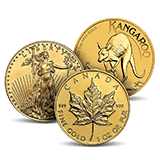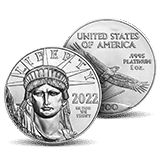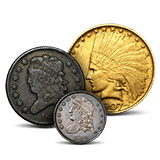
The Irish florin (flóirín), more commonly known as the two-shilling coin, formed a key 1/10 subdivision of the pre-decimal Irish pound.
It was part of a broader series of Irish coins that also included the farthing, halfpenny, penny, threepence, sixpence, shilling, and half-crown. This series was designed to establish a uniquely Irish currency which was distinct from British coinage while maintaining a practical system for everyday transactions.
Historical Context of the Irish Florin
First Issuance and Authorization
he florin was introduced as part of Ireland’s first independent currency system following the establishment of the Irish Free State in 1922. It was authorized by the Coinage Act of 1926, which formalized Ireland’s break from British coinage.
Economic and Political Motivations
The introduction of an independent Irish currency was driven by:
- Economic Sovereignty: Reducing reliance on British currency.
- National Identity: Creating coins that reflected Irish culture rather than British symbols.
- Higher Silver Content: Strengthening confidence in the new currency by making it more valuable than its British equivalent.
Despite some opposition, the Coinage Committee, chaired by W.B. Yeats, played a crucial role in ensuring that Ireland’s new coinage reflected its cultural heritage and was well-received by the public.
Design and Symbolism of the Irish Florin
Obverse Design
The obverse featured an Irish harp, a national symbol with deep historical roots. The choice of the harp dates to medieval Ireland and was commonly associated with Gaelic royalty and traditional music. It had also appeared on earlier Irish coinage, like the coins issued under Henry VIII and Queen Elizabeth I, making it a fitting emblem for a sovereign Irish currency.
Inscriptions on the obverse underwent minor adjustments:
- 1928-1937: The inscription read “Saorstát Éireann” (Irish Free State), with the date split on either side of the harp.
- 1938-1968: The inscription changed to “Éire” (Ireland), with the date positioned to the right.
Reverse Design
The reverse of the florin depicted a salmon, which was chosen for its dual significance:
- It represented Ireland’s fishing industry, which was vital to the economy.
- It referenced the Salmon of Knowledge, a legendary creature from Irish mythology believed to grant wisdom.
Alternative Designs Considered
Various alternative animals were considered for the florin before final approval. The selection of wildlife over historical figures was a conscious effort to break from British coinage traditions. Other proposed designs included a stag and a horse, but the salmon was ultimately chosen due to its deep cultural and economic importance.
Minting, Composition, and Dimensions
Minting Location
The Irish florin was struck by The Royal Mint in London, as Ireland lacked domestic minting facilities. The coin was 29 mm in diameter and weighed 11.3 grams.
Composition Changes
The Irish florin was initially struck with 75% silver, a higher silver content than its British counterpart, possibly to ensure that Ireland’s new currency was not perceived as inferior.
In 1951, the florin transitioned to a cupronickel composition (75% copper, 25% nickel), which made later issues more durable but visually distinct from their silver predecessors, which had a whitish appearance and wore more gracefully.
- 1928-1943: 75% silver, 25% copper, giving early florins a distinct white appearance.
- 1943-1968: Cupronickel (75% copper, 25% nickel) due to rising silver costs.
Circulation and Legacy
Comparison to Other Silver Coin Withdrawals
Ireland’s withdrawal of silver coinage in 1943 mirrored global trends, as many countries, including the UK (1947), the US (1965), and Canada (1968), phased out silver due to increasing costs.
Final Years and Withdrawal
- The florin was last minted in 1968.
- It continued to circulate alongside the ten-pence coin after decimalization in 1971.
- It was officially withdrawn on June 1, 1994, when the smaller ten-pence coin was introduced.
Value and Collectability
Rare Dates and Variations
- 1928-1943 Silver Florins: Highly sought after, particularly in high grades.
- 1943 Silver Florin: Among the rarest, commanding prices of $2,300 to $4,600.
Collector Pitfalls
- Avoid cleaned or polished coins, as they lose value.
- Beware of forgeries, especially for rare dates.
Auction Records
Rare uncirculated silver florins have fetched high prices at numismatic auctions.
The Irish florin was a symbol of Ireland’s journey toward monetary independence. From 1928 to 1994, the florin embodied economic progress, cultural identity, and numismatic artistry.
Ultimately, the florin remains one of Ireland’s most iconic coins, reflecting a nation’s growth and resilience through changing times.




